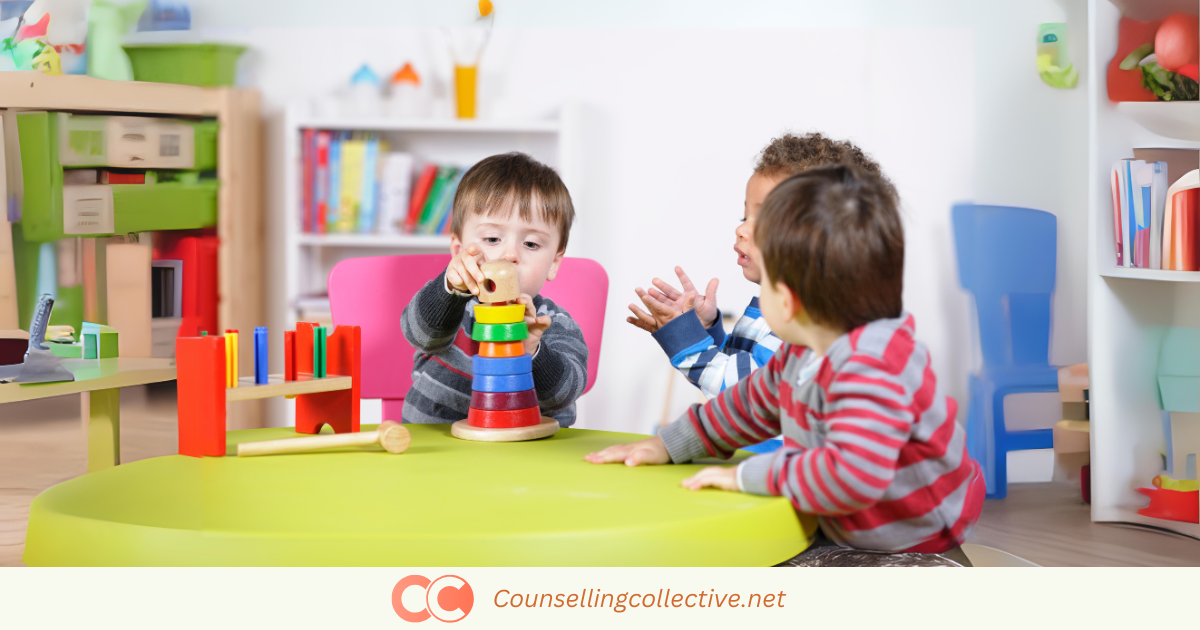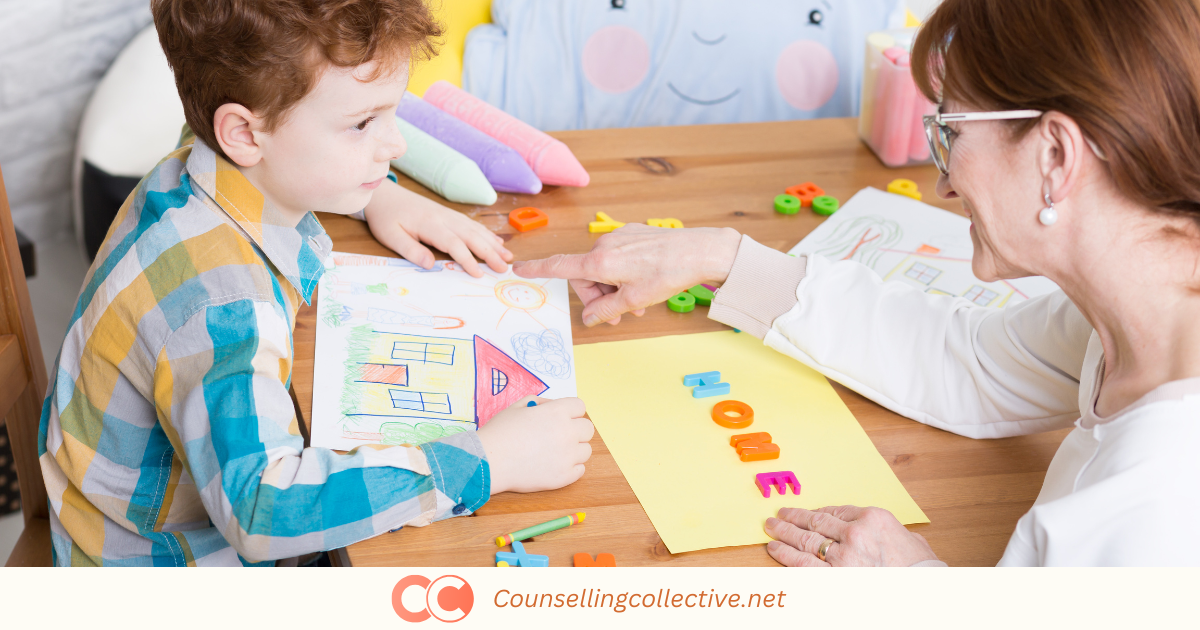Contents
Introduction

Attachment-Based Therapy: Techniques, Applications, and Effectiveness
Attachment-Based Therapy (ABT) is grounded in the principles of attachment theory, which explores how early relationships with caregivers influence emotional and psychological development. This therapeutic approach emphasizes the role of secure and nurturing relationships in fostering emotional health and resilience. By understanding and addressing attachment patterns, ABT aims to improve interpersonal relationships and overall well-being.
This article will explore into the foundational principles of ABT, key techniques, applications in various therapeutic contexts, and its effectiveness. It will also address common misconceptions and criticisms, highlighting how this approach can support individuals in developing healthier, more secure attachments.
What is Attachment-Based Therapy?
Attachment-Based Therapy focuses on the idea that early relationships with caregivers shape an individual’s ability to form secure attachments throughout life. Developed from John Bowlby’s attachment theory, ABT aims to address and heal attachment-related issues by fostering secure, supportive relationships. The therapy helps individuals understand their attachment styles, resolve past relational traumas, and build healthier connections. By emphasizing the importance of secure attachment, ABT provides a framework for improving emotional regulation and relationship quality.
Real-Life Example: A person with a history of insecure attachment struggles with forming close relationships. Through ABT, they explore their early attachment experiences and work with their therapist to develop a more secure attachment style. As they gain insights into their relational patterns and practice emotion regulation techniques, they start building healthier connections with others, leading to improved relationship satisfaction and emotional stability.
Why is Attachment-Based Therapy Important?
Attachment-Based Therapy is crucial because it addresses the impact of early attachment experiences on an individual’s current relational patterns and emotional health. Secure attachments formed in early life contribute to resilience, emotional stability, and healthy relationships. Conversely, insecure or disrupted attachments can lead to difficulties in emotional regulation and interpersonal interactions. ABT provides a therapeutic approach to repair and enhance attachment patterns, helping individuals develop more secure, supportive relationships and improve overall well-being. This therapy is particularly valuable for those struggling with attachment-related issues such as anxiety, depression, and relational difficulties.
Core Concepts
- Attachment Styles: Attachment styles are patterns of relating to others that emerge from early caregiving experiences and influence how individuals form and maintain relationships. Secure attachment is marked by comfort with intimacy and balanced dependence. Insecure attachment styles—such as anxious, avoidant, or disorganized—often reflect challenges in managing closeness and dependency. ABT seeks to identify and address these styles to promote healthier, more fulfilling relationships and emotional resilience.
- Early Relational Wounds: Early relational wounds are emotional injuries sustained from inadequate or harmful caregiving experiences during childhood. These wounds can significantly affect an individual’s ability to form secure attachments and impact current relational dynamics. ABT focuses on recognizing these wounds, understanding their effects, and facilitating healing processes to improve present relational patterns and overall emotional well-being.
- Secure Therapeutic Relationship: In ABT, the therapeutic relationship is intentionally designed to model secure attachment. This involves creating a safe, supportive, and empathetic environment where clients feel genuinely understood and validated. Such a therapeutic alliance helps clients develop trust and relational skills, which they can then apply to enhance their relationships outside of therapy, fostering better connection and emotional health.
Techniques Used In Attachment-Based Therapy
- Attachment Assessment: This technique involves evaluating an individual’s past attachment experiences to identify how they influence current emotional challenges and behavior. By understanding these patterns, therapists can tailor interventions to address unresolved issues and promote healthier emotional regulation. It helps in connecting past experiences with present difficulties, guiding effective therapy.
- Secure Therapeutic Relationship: Establishing a strong, trusting bond between therapist and client is crucial for effective therapy. This relationship provides a safe space for clients to explore their issues and vulnerabilities. A secure therapeutic relationship fosters trust and openness, which are essential for healing and personal growth. It creates an environment where clients feel supported and understood.
- Mutual Understanding: In couples therapy, this technique focuses on helping partners gain insight into each other’s attachment styles and relational behaviors. By improving understanding of each other’s emotional needs and responses, couples can address and resolve communication problems and emotional distance. It enhances the couple’s connection and intimacy by fostering empathy and cooperation.
- Relational Principles: This technique involves applying attachment theory principles to improve relationships, especially in parenting. By understanding different attachment styles and practicing secure relational behaviors, parents can create a supportive and nurturing environment for their children. This approach promotes healthy emotional development and strengthens parent-child bonds.
Notable Figures in Attachment-Based Therapy
John Bowlby: The founder of attachment theory, Bowlby’s research established the significance of early attachment relationships. His work has profoundly influenced Attachment-Based Therapy by emphasizing how early bonds shape emotional development and relational patterns.
Mary Ainsworth: Collaborator with Bowlby, Ainsworth developed the “secure base” concept and conducted the influential Strange Situation procedure. Her research on attachment styles and patterns has been crucial in shaping Attachment-Based Therapy.
Daniel J. Siegel: A leading figure in integrating attachment theory with neuroscience, Siegel’s work on interpersonal neurobiology has enhanced Attachment-Based Therapy. His research elucidates how the brain processes attachment and relational experiences, deepening therapeutic understanding.
Sue Johnson: Known for her contributions to Emotionally Focused Therapy (EFT), Johnson has provided valuable insights into attachment dynamics in romantic relationships. Her work complements Attachment-Based Therapy by exploring how attachment impacts relational intimacy and communication.
Sue Johnson- Image Source: holdmetightonline.com

Theories Influenced by Attachment-Based Therapy
- Schema Therapy: ABT complements Schema Therapy by integrating attachment theory’s insights into how early attachment experiences shape these schemas. This approach helps therapists address core relational patterns and improve emotional and cognitive functioning.
- Dialectical Behavior Therapy (DBT): ABT informs DBT by incorporating insights from attachment theory into emotional regulation and interpersonal effectiveness. This integration allows for a more nuanced understanding of how attachment styles impact emotional responses and relational skills, thereby enhancing DBT’s effectiveness in managing emotions and improving relationships.
- Interpersonal Therapy (IPT): ABT enriches IPT by offering a comprehensive view of how attachment styles influence interpersonal relationships. This deeper understanding allows IPT to address relational issues with greater precision, improving the effectiveness of interventions aimed at enhancing social connections and relational functioning.
- Cognitive-Behavioral Therapy (CBT): ABT informs CBT by integrating attachment theory’s perspective on how early relational experiences shape cognitive and emotional patterns. This approach provides a richer context for understanding how attachment influences cognitive processes and emotional responses, thereby enhancing CBT’s effectiveness in addressing maladaptive thought and behavior patterns.
Applications of Attachment-Based Therapy

Trauma Survivors
ABT is highly effective for trauma survivors, as it addresses the impact of early relational disruptions and promotes secure attachments. Trauma often leads to feelings of disconnection and emotional dysregulation.
Example: A trauma survivor works with their therapist to understand how past attachment experiences affect their current difficulties. By using attachment assessment and developing a secure therapeutic relationship, the survivor begins to heal and build more secure connections, improving their overall emotional well-being.
Image Source: lighthousehealingcenterms.com
ABT is valuable for couples struggling with attachment issues, as it helps them understand and address relational patterns affecting their relationship. By fostering secure attachments within the couple dynamic, ABT supports healthier communication and emotional connection, enhancing the quality of the relationship.
Example: A couple dealing with communication problems and emotional distance engages in ABT to explore their attachment styles and relational patterns. Through techniques such as mutual understanding and improved attachment dynamics, they enhance their relationship quality and emotional intimacy.
Image Source: theknot.com

Couples and Relationships

Parenting Support
ABT provides guidance for parents to develop secure attachment relationships with their children. By understanding attachment theory and applying relational principles, parents can create a nurturing environment that supports their child’s emotional development and well-being.
Example: A parent receives ABT to address challenges in their relationship with their child. By learning about attachment styles and practicing secure relational behaviors, the parent improves their connection with their child, fostering the child’s emotional growth and promoting a healthy parent-child relationship.
Image Source: mhapassaic.org
Common Myths about Attachment-Based Therapy
| Myth | Explanation |
| ABT focuses only on childhood issues | While ABT emphasizes early attachment experiences, it also addresses current relational dynamics and their impact on well-being. The therapy integrates both past and present relational patterns. |
| ABT is culturally biased | Critics suggest that ABT may not fully account for cultural differences in attachment patterns. However, there is ongoing effort to adapt ABT practices to be more culturally inclusive and sensitive. |
| ABT ignores other psychological factors | ABT focuses on attachment relationships but acknowledges other factors influencing mental health. It integrates attachment theory with other psychological and social elements for a comprehensive approach. |
| ABT is not evidence-based | Although some critics argue otherwise, there is a growing body of empirical research supporting ABT’s effectiveness, particularly in addressing relational and emotional issues. |
Criticisms of Attachment-Based Therapy
- Overemphasis on Early Relationships: Critics argue that Attachment-Based Therapy (ABT) may place too much emphasis on early attachment experiences, potentially neglecting other significant factors that influence psychological well-being. While early relationships are undeniably important, there is concern that focusing predominantly on these early experiences may limit the therapy’s scope. A broader integration of other psychological and environmental factors might enhance the therapy’s overall effectiveness.
- Limited Focus on Cultural Differences: ABT might not fully address the cultural variations in attachment patterns and relational dynamics. Critics suggest that the therapy could be more inclusive of cultural contexts and differences, which would enhance its applicability and effectiveness across diverse populations. Incorporating cultural considerations could lead to more nuanced and relevant therapeutic interventions.
- Insufficient Empirical Evidence: Despite its strong theoretical foundation, ABT faces criticism for lacking comprehensive empirical research to support its effectiveness. Some argue that there is a need for more rigorous, evidence-based studies to validate the therapy’s impact. Such research would help guide its application in various therapeutic settings and ensure its scientific credibility.
Conclusion
Attachment-Based Therapy (ABT) offers a valuable approach to understanding and improving emotional and relational well-being through the lens of attachment theory. By focusing on early attachment experiences and fostering secure, supportive relationships, ABT provides effective tools for addressing attachment-related issues, enhancing emotional resilience, and improving interpersonal dynamics. While ABT has faced criticisms regarding its focus and empirical support, its contributions to therapeutic practice and its impact on relational health underscore its importance in the field of psychology.
References
- Bowlby, J. (1982). Attachment and loss: Volume 1. Attachment. Basic Books.
- Ainsworth, M. D. S., Blehar, M. C., Waters, E., & Wall, S. (1978). Patterns of attachment: A psychological study of the strange situation. Erlbaum.
- Siegel, D. J. (2012). The developing mind: How relationships and the brain interact to shape who we are (2nd ed.). Guilford Press.
- Johnson, S. M. (2004). The practice of emotionally focused couple therapy: Creating connection. Brunner-Routledge.
- Main, M., & Solomon, J. (1990). Procedures for identifying infants as disorganized/disoriented during the Ainsworth Strange Situation. In M. T. Greenberg, D. Cicchetti, & E. Cummings (Eds.), Attachment in the preschool years: Theory, research, and intervention (pp. 121-160). University of Chicago Press.
- Van IJzendoorn, M. H., & Sagi, A. (1999). Security of attachment and disorganization in Israel. Attachment & Human Development, 1(2), 107-132.
- Hesse, E., & Main, M. (2000). Frightening or frightened communication in disorganized attachment relationships. In J. Solomon & C. George (Eds.), Attachment disorganization (pp. 289-320). Guilford Press.
- Fonagy, P., & Target, M. (2003). Attachment theory and psychoanalysis. Other Press.
- Cassidy, J., & Shaver, P. R. (Eds.). (2008). Handbook of attachment: Theory, research, and clinical applications (2nd ed.). Guilford Press.
- McGoldrick, M., Carter, B., & Garcia Preto, N. (2016). The expanded family life cycle: Individual, family, and social perspectives (5th ed.). Pearson.
Explore more Theories & Therapies







